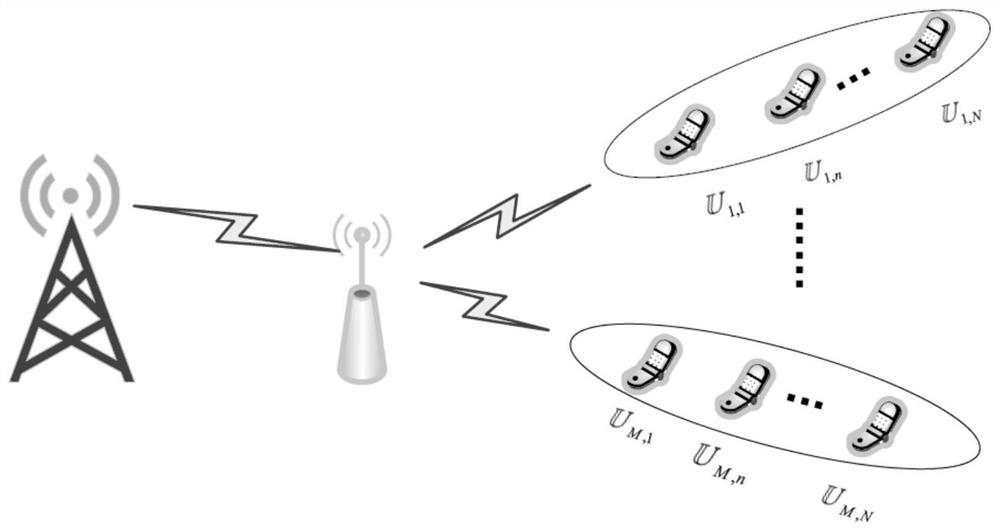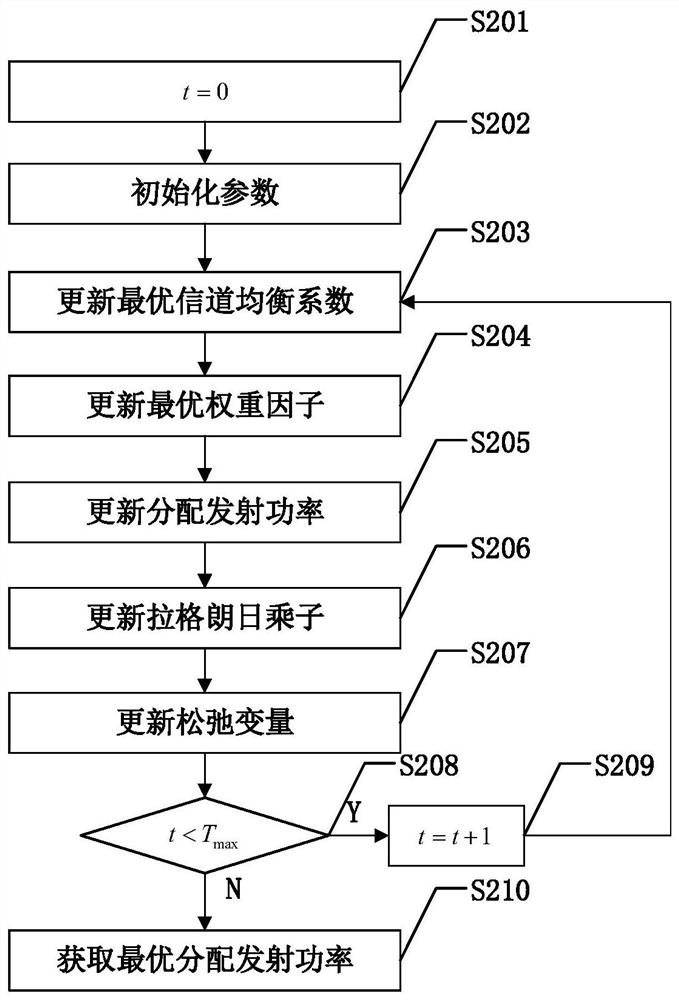Optimal Power Allocation Method Based on Fairness and Spectrum Efficiency
A technology of spectral efficiency and allocation method, applied in the field of power allocation based on fairness and optimal spectral efficiency, can solve problems such as the research of unallocated power allocation algorithm, and achieve the goal of improving the reachable data rate, improving the solution efficiency, and achieving the highest system spectral efficiency. excellent effect
- Summary
- Abstract
- Description
- Claims
- Application Information
AI Technical Summary
Problems solved by technology
Method used
Image
Examples
Embodiment
[0021] In order to better illustrate the technical solution of the present invention, a downlink half-duplex (Half-Duplex, HD) amplify-and-forward (Amplify-and-Forward, AF) NOMA-RS model is briefly described first.
[0022] figure 1 It is a structural schematic diagram of the downlink half-duplex amplifying and forwarding NOMA-RS model in the present invention. Such as figure 1 shown, assuming the base station via relay Communicate with M×N users, where the base station The number of transmit antennas is N S ,relay The number of transmit antennas is N R , all users are single-antenna, then there are N S ≥N R ≥1. M×N users are randomly assigned to M clusters, and the number of users in each cluster is N, with the symbol Denotes the nth user in the mth cluster, where m∈{1,...,M}, n∈{1,...,N}. base station to relay distance between and relay to user The distance between the symbol d SR ampersand Indicates that α represents the path loss coefficient. ba...
PUM
 Login to View More
Login to View More Abstract
Description
Claims
Application Information
 Login to View More
Login to View More - R&D
- Intellectual Property
- Life Sciences
- Materials
- Tech Scout
- Unparalleled Data Quality
- Higher Quality Content
- 60% Fewer Hallucinations
Browse by: Latest US Patents, China's latest patents, Technical Efficacy Thesaurus, Application Domain, Technology Topic, Popular Technical Reports.
© 2025 PatSnap. All rights reserved.Legal|Privacy policy|Modern Slavery Act Transparency Statement|Sitemap|About US| Contact US: help@patsnap.com



